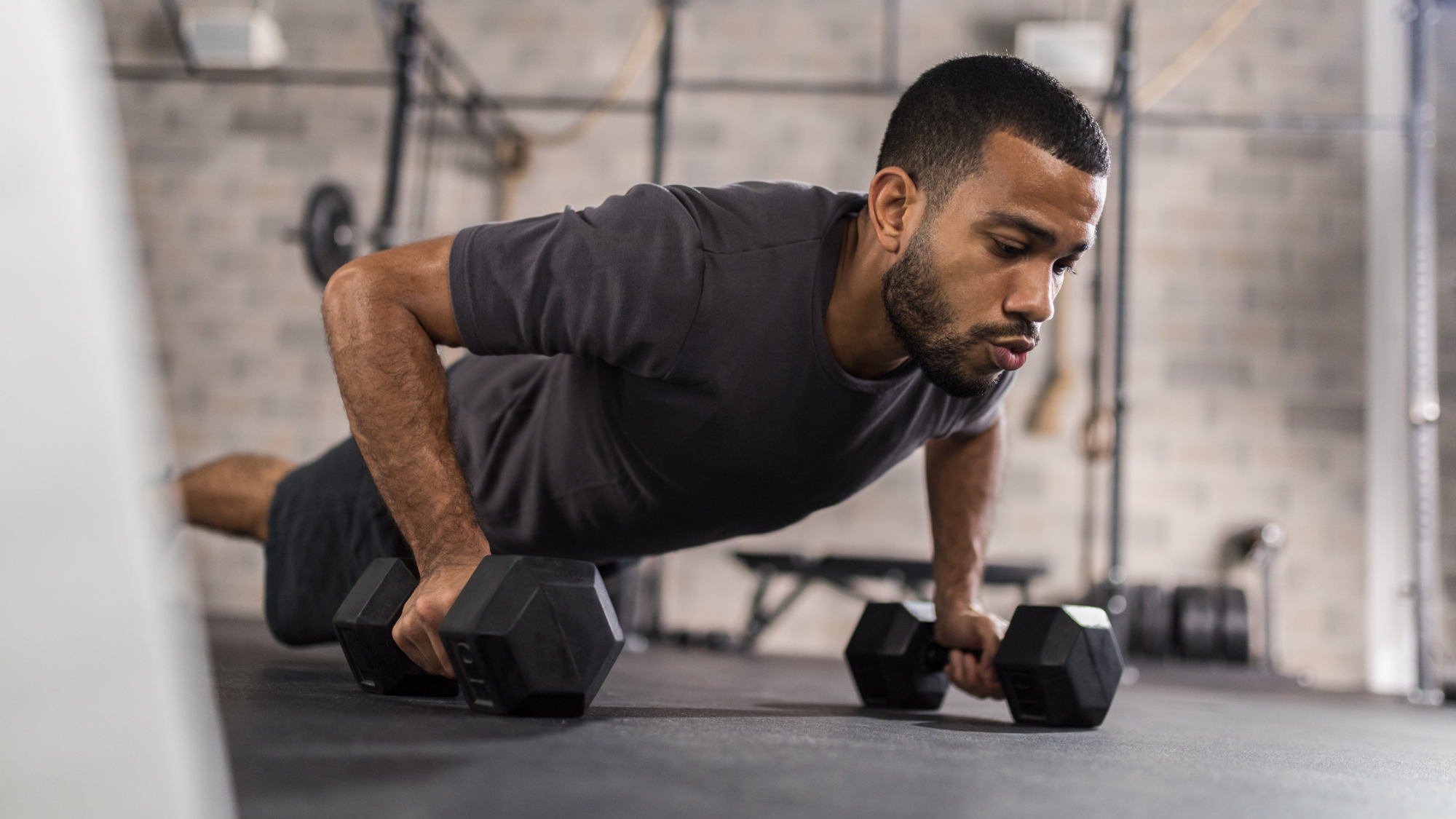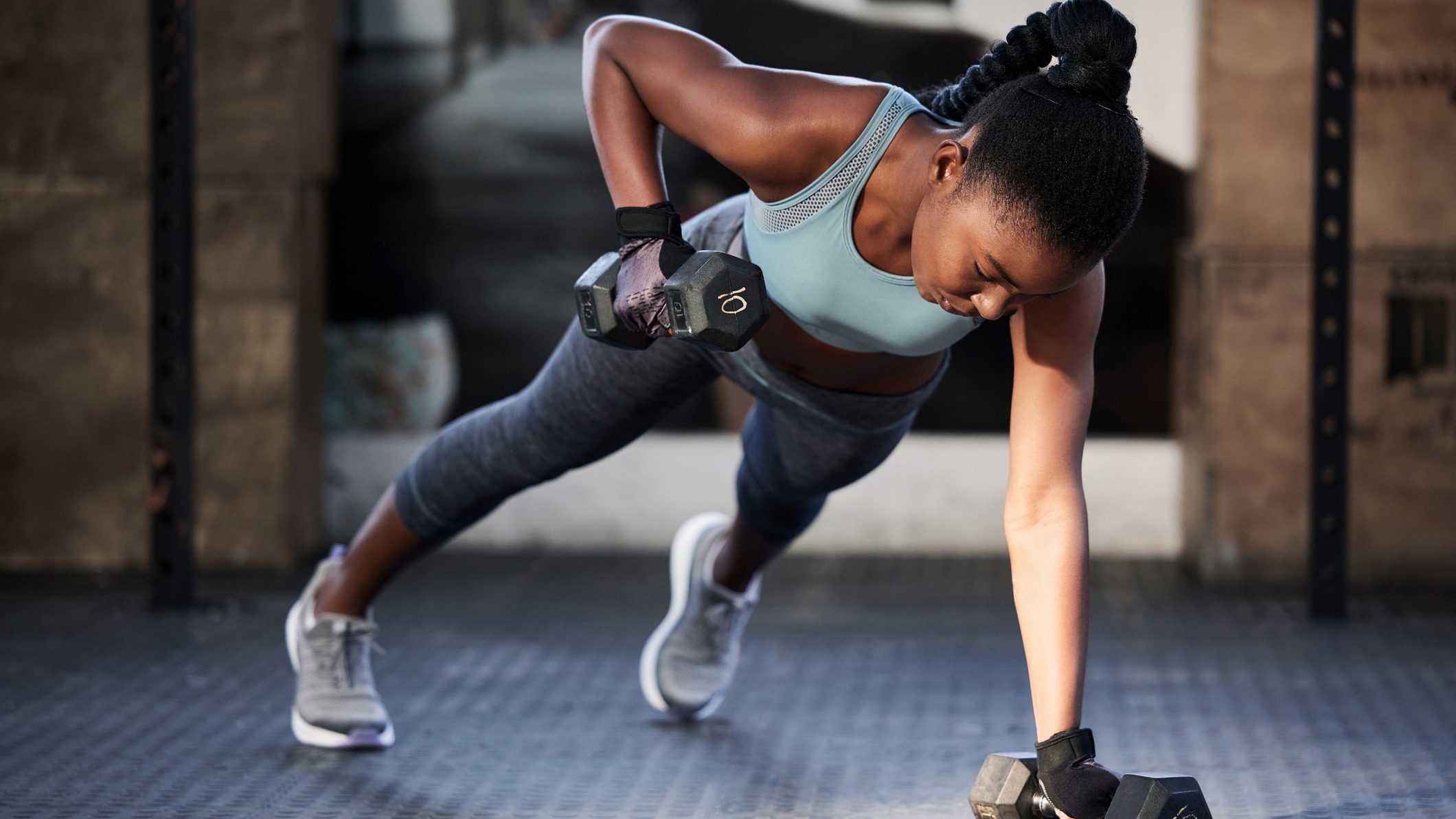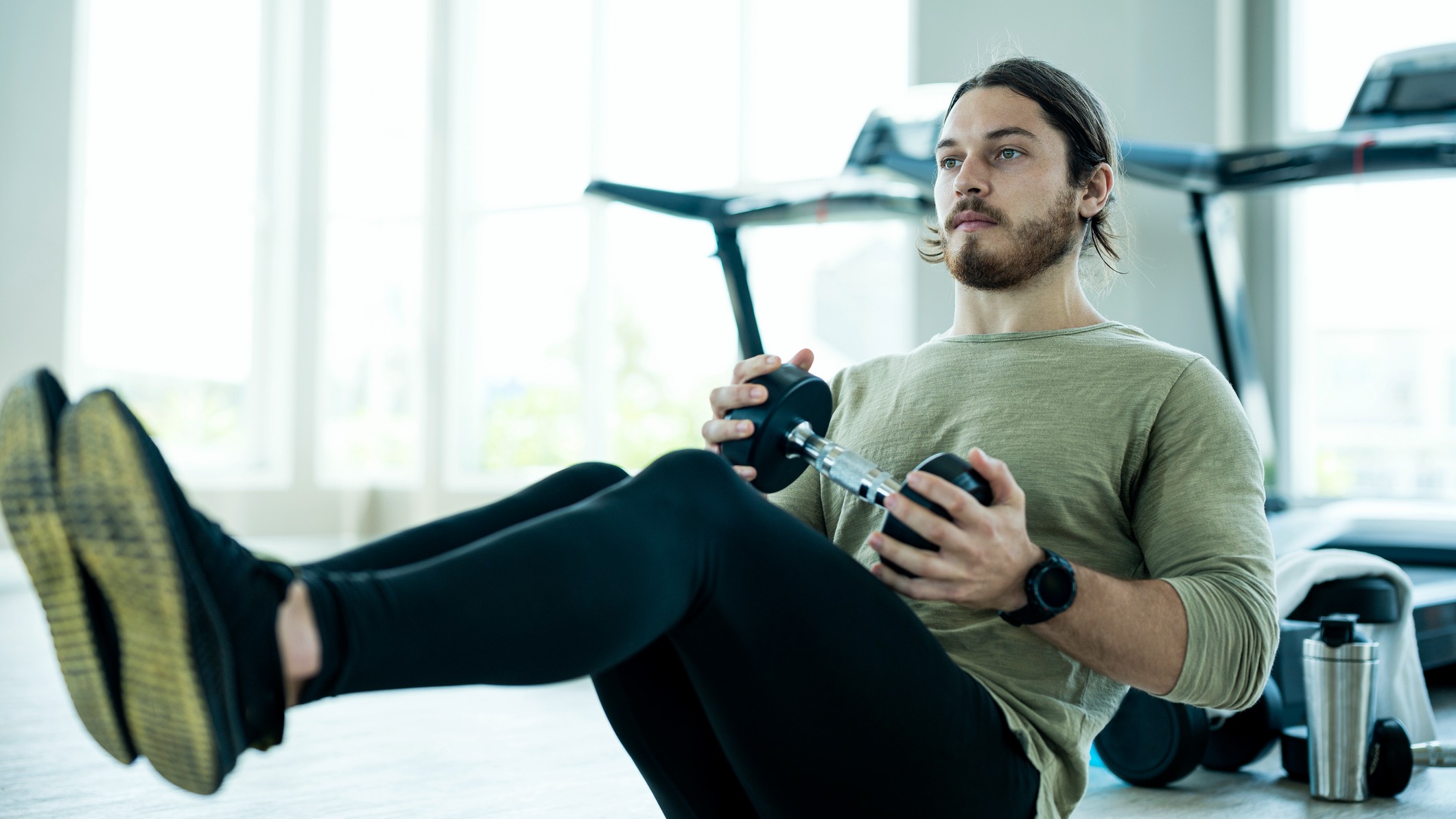An expert trainer says you only need these three dumbbell exercises to build upper-body strength at home
Build muscle, increase your upper-body strength and boost your metabolism with this 15-minute workout


Upper-body workouts are an excellent way to strengthen your muscles, boost your bone health and even lift your mood. You don't need to visit the gym for a good one either.
This three-move, two-dumbbell routine comes from strength and conditioning coach, sports scientist and Horton Barbell founder Ryan Horton. It's an efficient, effective routine that works muscles across your upper body and core.
Having taken it for a spin, I found you can have it wrapped up in less than 15 minutes too, making it a great session to have in your back pocket for busy days.
Signature Fitness 10lb dumbbells: was $93.99, now $29.99 at Amazon
Save $64 You only need a set of dumbbells to do this workout. If you don't already own a pair, we like this cheap set from Signature Fitness. Their hex shape means that they're sturdy enough for moves like the renegade row and they won't roll away mid-workout. They're currently reduced, as part of the Black Friday weights sales.
How to do Ryan Horton's three-move upper-body dumbbell workout
- Renegade row: 3x10-15
- Russian twist: 3x10-15 taps on each side
- Dumbbell Z press: 3x10-15
Complete the three exercises listed above as a circuit. This means you'll do 10-15 renegade rows, 10-15 Russian twists on each side, then 10-15 dumbbell z presses. Repeat this routine two more times to complete the workout.
Horton recommends taking a few deep breaths, or 10 to 15 seconds, between exercises to make sure you're ready to tackle the next move.
If you're new to any of these exercises, watch the video below for a demonstration of each one, or scroll down for written explainers.
A post shared by Harry Bullmore: Fitness Writer (@harry_bullmore_fitness_writer)
A photo posted by on
1. Renegade row

- Start in a plank position, with your hands gripped around the dumbbells that are resting on the floor.
- Engage your core, then row the dumbbell up towards your chest, before slowing returning it to the floor. Try and hold your body still during the movement and don't let your hips dip down.
"Rowing a dumbbell using one arm at a time while in a push-up position primarily works the back and biceps," says Horton.
Start your week with achievable workout ideas, health tips and wellbeing advice in your inbox.
"However, the shoulders are put to work having to stabilize your supporting arm while the other is rowing. The abs are also key players, stabilizing the body while you essentially hold a plank position."
2. Russian twist

- Sit on the floor with your knees bent in front of you. Lean back slightly and bring your feet up off the floor. Hold a dumbbell at around chest level.
- Twist to one side, while keeping your legs stationary. Then twist to the other side and repeat.
"The Russian twist is a great rotational core exercise that targets the rectus abdominis and obliques," explains Horton.
The rectus abdominis are responsible for the six-pack shape on the front of the stomach. These muscles are also pivotal for flexing (or bending) your spine and providing core stability.
The internal and external obliques (sometime colloquially called "side abs") run down the side of your abdomen. Their main function is rotating and twisting your trunk, but they also help support and protect your spine.
Given their roles in maintaining your posture, sparing your spine from excessive load and preventing back pain as a result, it's well worth taking the time to strengthen these core muscles. And, as Horton points out, these aren't the only muscle to benefit from Russian twists.
"By holding a dumbbell in front of your chest, the biceps, shoulders and upper back also become involved in the movement."
3. Dumbbell Z press
- Sit on the floor with your legs straight out in front of you. Hold your dumbbells near your shoulders.
- Press the dumbbells up and overhead, then bring them back down to their starting position with control.
"A Dumbbell Z Press—pressing dumbbells overhead while sitting on your butt with your legs straight out in front of you—is one of my favorite shoulder press variations because the core has to work very hard to keep you upright and stop you from falling backwards," says Horton.
It will also strengthen your shoulders, as well as your triceps—the muscles running along the back of your upper arm.
Why should you start strength training at home?
When people start exercising at home, they often veer towards activities that promise to burn calories quickly. For example, running or high-intensity interval training (HIIT) workouts for fat loss.
These types of training have their place, and are great for boosting your cardiovascular endurance—the ability of your heart and lungs to deliver oxygen to your body during exercise. But it's my belief that strength training workouts often offer more bang for your buck, particularly among beginners.
This is because strength training builds a more robust body that can handle whatever your workouts (and daily life) can throw at it.
It can strengthen your muscles and increase your bone density, while also improving your mobility. The result? Everyday tasks like carrying heavy grocery bags will feel much easier.
If you want to buy a set of weights and start building strength at home, take a look at our tried and tested guide to the best adjustable dumbbells.

Harry Bullmore is a Fitness Writer for Fit&Well and its sister site Coach, covering accessible home workouts, strength training session, and yoga routines. He joined the team from Hearst, where he reviewed products for Men's Health, Women's Health, and Runner's World. He is passionate about the physical and mental benefits of exercise, and splits his time between weightlifting, CrossFit, and gymnastics, which he does to build strength, boost his wellbeing, and have fun.
Harry is a NCTJ-qualified journalist, and has written for Vice, Learning Disability Today, and The Argus, where he was a crime, politics, and sports reporter for several UK regional and national newspapers.
